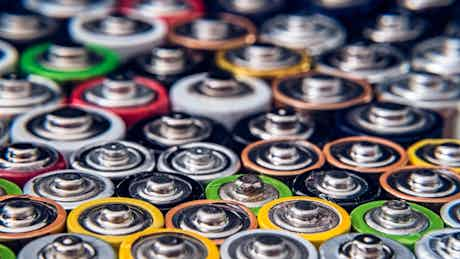What is cobalt used for in electric cars?
October 07, 2022 by Hugo Griffiths

Cobalt is an essential component for EV batteries; we dig into it
There is a degree of familiarity with the materials cars are made from: while most of us may not think too much about steel, aluminium, glass and plastic, we generally know what these are, and where they come from. Same goes for the petrol and diesel that have fuelled vehicles for the last century or so.
Electric cars are in some ways a different proposition as their batteries consist of materials that may not be so familiar. These include lithium, manganese and nickel, as well as cobalt – an element that has been the focus of an amount of media scrutiny over the last few years.
Here, we dig into what cobalt is, why it’s used in EV batteries, and why there has been some controversy surrounding it.
What is cobalt?
Cobalt is a metal element (symbol Co) that is found in the Earth’s crust, though not often by itself: in most cases it is a by-product of nickel and copper mining.
Used for millennia as a dye for glass and ceramics (hence cobalt blue), cobalt has more recently been used to create alloys from which jet-engine turbine blades are constructed, and more recently still in lithium-ion batteries. These are commonly found in smartphones and laptops, and now power almost every electric car in the world.
Why do EV batteries need cobalt?
Lithium-ion batteries provide the electricity that powers an electric car’s motor when lithium ions move from the battery’s negatively charged anode to its positive cathode.
Cobalt comes into play because it is both very energy dense, meaning it can handle lots of electricity relative to the amount used, and because it has excellent heat-resistant properties, which is important from a safety perspective. It is for these reasons that cathodes in lithium-ion batteries are comprised of between roughly 10% and 30% cobalt, with each EV needing between six and 12kg of the element.
Why is cobalt controversial?
It’s all to do with where it comes from and where it goes before it gets to batteries. Around 60% of the world’s cobalt is located in the Democratic Republic of Congo, where unregulated ‘artisanal’ mines (some of which employ child workers) produce between 20 to 40% of the country’s cobalt.
Cobalt can’t just be whacked straight into a battery once it’s been dug out of the ground, though, it needs to be processed into a refined form first. Around 80% of the world’s cobalt is processed in China, which some consider to be a suboptimal geopolitical arrangement.
What are car makers doing about this?
A 2018 survey of car manufacturers found general awareness of the issues surrounding cobalt, with corporate social responsibility programmes aimed at reducing or eliminating the use of what some firms called “conflict materials”.
Will EV batteries always need cobalt?
There has also been a concerted effort to reduce the amount of cobalt used in lithium-ion batteries, with many manufacturers moving to 8:1:1 chemistries, which use one part cobalt and one part manganese to every eight parts of lithium. This is half the amount found in older 6:2:2 chemistries, which use two parts cobalt. Research is also ongoing to produce batteries that need no cobalt, although this technology looks to be some way off.
It is worth highlighting, though, that while cobalt is not the only problematic element used in the manufacture of EV batteries (around half a million tonnes of water are required to make one tonne of lithium, for example), oil production is far from without issue, either: the petrol and diesel our cars run on is linked to oil spills and other environmental issues, while petroleum refineries are a major contributor of greenhouse gas emissions.















